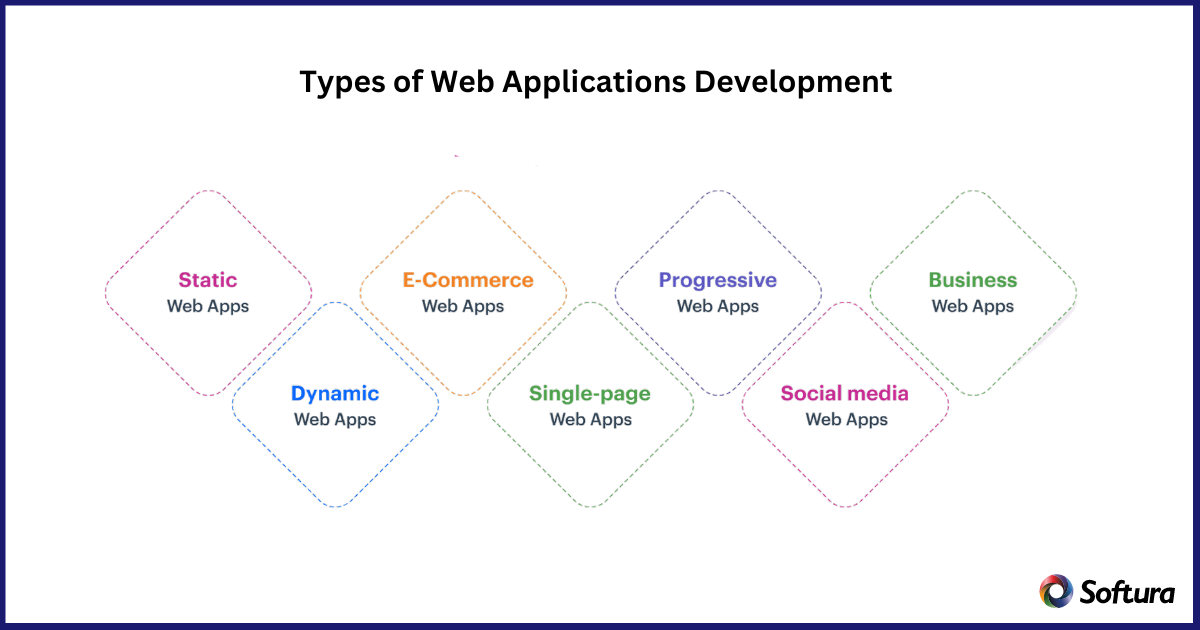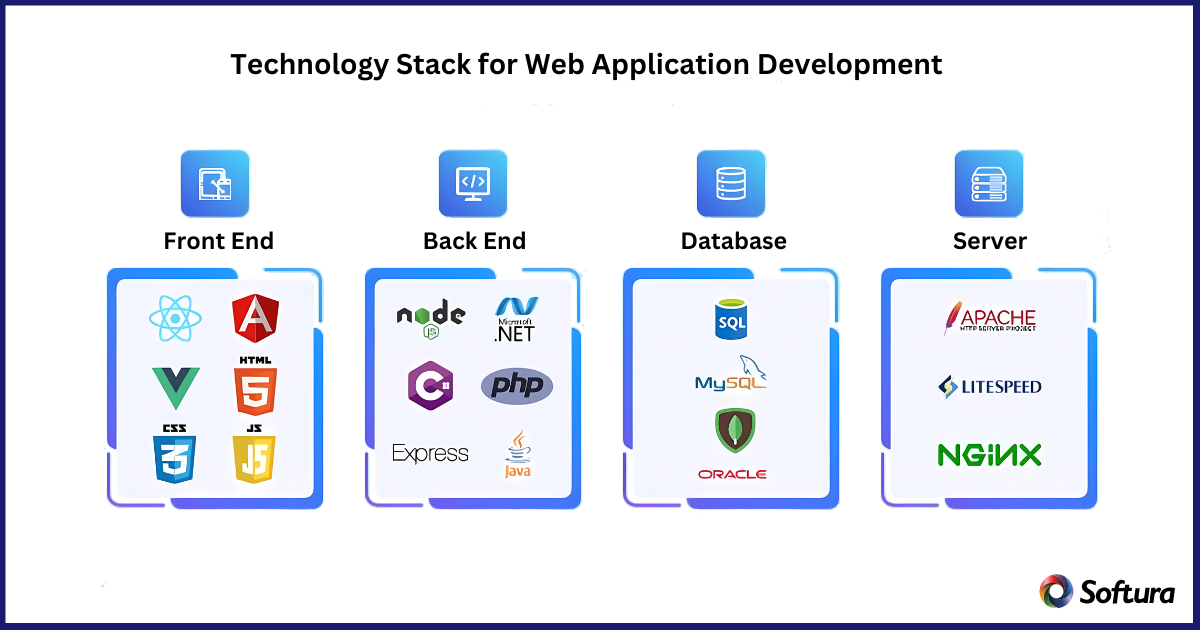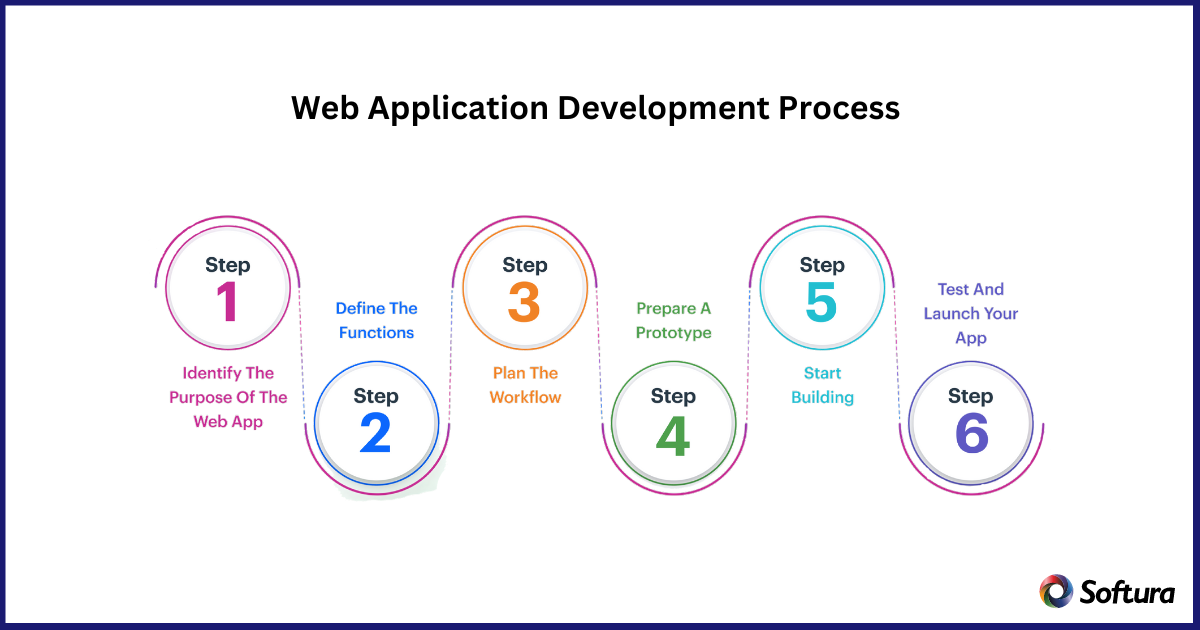"Our integration with the Google Nest smart thermostats through Aidoo Pro represents an unprecedented leap forward for our industry."
- Antonio Mediato, founder and CEO of Airzone.
As we step into 2025, the realm of Web Application Development continues to evolve, offering innovative solutions and opportunities for businesses worldwide. In this era of digital transformation, understanding the intricacies of web application development is crucial for leveraging its full potential. This article delves into what web application development entails, its types, benefits, technological advancements, and its prospects.
Web Application Development refers to the process of designing, building, testing, and deploying applications that are accessed through a web browser. This process involves both the creation of client-side (front-end) and server-side (back-end) scripting. In 2025, custom web application development is not just about building a functional application but also about creating responsive, user-friendly, and secure applications that align with the latest technological trends.
Web applications vary based on their functionality, complexity, and usage. Common types include:
Static web applications display fixed content to all users. They are easy to develop and host, with no need for server-side processing. Ideal for informational sites like portfolios and landing pages.
Dropbox's landing page is an excellent example of a static web application. It presents fixed content like features, pricing, and user testimonials. The primary aim is to inform visitors about the product and encourage them to sign up or download the app.
Dropbox uses its static landing page to provide essential information about its cloud storage services in a clear, unchanging format.
Dynamic web applications allow for interactive content, updating in response to user inputs. They require server-side processing and are ideal for sites needing frequent content updates, like news portals and forums.
Wikipedia is a dynamic web application where content is continuously updated by users around the world. It allows for content editing, addition, and collaboration, making it an ever-evolving source of information.
Wikipedia serves as a dynamic, user-edited online encyclopedia. Its content is not static but is constantly updated and revised by its user community.

E-commerce applications are designed for online shopping, integrating product catalogs, shopping carts, and payment systems. They offer a comprehensive platform for buying and selling products or services online.
Amazon is a quintessential example of an e-commerce application. It offers a vast range of products, integrates a sophisticated shopping cart system, and provides a seamless checkout process with various payment options.
Amazon is a global online marketplace where customers can browse and purchase a wide array of products, from books to electronics, and everything in between.
Content Management Systems enable users to create, manage, and modify website content without technical expertise. They are ideal for blogs, news websites, and e-commerce sites, offering flexibility and ease of use.
The New York Times uses a CMS to manage and publish its digital content. With a CMS, they can easily update news articles, manage digital subscriptions, and personalize content for different reader segments.
Progressive Web Applications combine the best of web and mobile app development, offering an app-like experience in a browser. They are fast, reliable, and can work offline, ideal for businesses aiming to enhance mobile user experience.
Starbucks' PWA combines features of web and mobile apps, providing an app-like experience in a web browser. Customers can browse the menu, customize orders, and pay online, all with the convenience and speed of a native app.
Starbucks has a progressive web app that allows customers to order ahead, pay, and earn rewards, all within a seamless, fast, and user-friendly interface.
The technology stack for web application development typically includes:

"Our integration with the Google Nest smart thermostats through Aidoo Pro represents an unprecedented leap forward for our industry."
- Antonio Mediato, founder and CEO of Airzone.
Web application development offers several advantages, including:
"By analyzing the data from our connected lights, devices and systems, our goal is to create additional value for our customers through data-enabled services that unlock new capabilities and experiences."
- Harsh Chitale, leader of Philips Lighting’s Professional Business.
The process of web application development involves several key steps:
During this stage, the team defines the application's purpose, scope, and key functionalities. It involves thorough market research, identifying target users, and outlining the app's objectives.
The design phase focuses on crafting the user interface and experience, creating wireframes, and defining the visual aesthetics. It's where the application's look and feel is conceptualized and planned.
In the development phase, programmers write the code for both the front-end and back-end of the application. This step involves implementing the design into functional code and developing the necessary features.

Testing is crucial for ensuring the application's functionality, performance, and security. It involves identifying and fixing bugs, conducting usability tests, and validating the app against requirements.
Deployment is the process of launching the completed application on a server, making it accessible to users. This step includes setting up the hosting environment and pushing the application to production.
Maintenance involves regular monitoring, updating, and fixing bugs to ensure the application remains current and functional. This ongoing process includes performance optimization and adding new features as needed
Onboard Offshore Web App Developers
Develop Mobile application and integrate it into your business processes with Softura's dedicated offshore mobile app developers!
"By analyzing the data from our connected lights, devices and systems, our goal is to create additional value for our customers through data-enabled services that unlock new capabilities and experiences."
- Harsh Chitale, leader of Philips Lighting’s Professional Business.
In 2025, some of the key trends in web application development include a growing emphasis on AI-driven features, enhanced user experience design, and increased focus on security. Developers are also leveraging progressive web apps and serverless architectures to deliver more efficient and scalable solutions.
AI and ML integration in web applications allows for advanced data analysis, personalization, and automation of tasks. This trend enhances user experiences by providing intelligent recommendations, chatbots, and predictive analytics.
PWAs combine the best features of web and mobile apps, offering offline functionality, fast loading times, and app-like interfaces. This trend is making web applications more accessible and user-friendly, especially on mobile devices.

API-first development prioritizes the creation of APIs before building the actual application, ensuring seamless integration and scalability. This approach facilitates better collaboration between front-end and back-end developers and enhances application flexibility.
Integrating voice search capabilities in web applications caters to the growing demand for hands-free navigation and accessibility. This trend is particularly significant for enhancing user engagement and providing inclusive experiences.
Low-code and no-code platforms empower non-technical users to build and customize web applications with minimal coding. This trend is democratizing web development, enabling faster deployment and encouraging innovation across various business sectors.
"By analyzing the data from our connected lights, devices and systems, our goal is to create additional value for our customers through data-enabled services that unlock new capabilities and experiences."
- Harsh Chitale, leader of Philips Lighting’s Professional Business.
A web application can revolutionize your business by:
"Our integration with the Google Nest smart thermostats through Aidoo Pro represents an unprecedented leap forward for our industry."
- Antonio Mediato, founder and CEO of Airzone.
The future of web application development is geared towards more personalized, secure, and efficient applications. Emerging technologies like blockchain, IoT, and cloud computing are set to play a pivotal role in shaping this future. As businesses continue to digitize, the demand for innovative web applications is expected to rise, making web application development a crucial skill in the tech industry.
In conclusion, Web Application Development in 2025 presents an exciting landscape filled with opportunities for innovation and growth. Understanding and adapting to these trends will be key for businesses and developers looking to make their mark in the digital world.
Are you ready for your next web application project?
Unlock your company's full potential with our comprehensive Software development services. Contact our experts today to discuss how we can drive your success together.